We live in the digital age, and if there’s one thing nearly everyone can agree on, it’s this: your restaurant needs a website.
A restaurant website isn’t just a hub for information about the company anymore. It also is one of the key pieces of marketing that allows you to solidify your brand to potential customers, selling them on both your menu and the experience of dining at your restaurant (or the ease of your delivery orders).
We know that for many owners and managers, actually building and maintaining a restaurant website can be daunting. With that in mind, we’ve assembled some simple guidelines to follow as you decide what to include on your restaurant website, how often to update it, and who should be doing that work for you.
What information must be on it?
While your website’s content depends a lot of what kind of restaurant you have and what you want it to accomplish for your business, there are some basic pieces of information that should be on the site regardless:
Contact Information
Obviously, your customers need to know where you’re located and how to call you. You should feature your restaurant’s address and phone number on the “Contact Us” page, as well as at the bottom of your website in the “footer.” It’s also a good idea to include an email contact, but make sure it’s a professional, not personal, email address.
Menu(s)
Consumers want to know what kind of food you have, as well as what to expect in terms of price. Having your menu (or menus!) on your website is crucial. That said, make sure it’s in an easily format, especially for mobile users. Just posting an image of your menu can make the menu difficult to load on phones if too large a file, and possibly hard to read if not a large enough file. Posting your menu as scannable text is also better for your search engine optimization.
Hours
Customers want to make sure you’ll be open when they visit your restaurant, after all. If you have multiple locations and they each have different hours, make that clear on your site.

What else should be included?
A good restaurant website doesn’t just give customers the bare necessities. It teases a bit of the experience they can expect when they dine.
Photos
Websites are largely a visual medium, so including photos of your food on your restaurant website is not only appropriate, but can entice customers in a way that words alone can’t.
That being said, you’ll want to use your own photos of your own food. It can be tempting to put up stock photos of food that’s similar to your menu, but it doesn’t look good when a restaurant doesn’t feel confident enough to post actual photos of their food and instead puts up someone else’s. Your customers can tell the difference.
You’ll also want to make sure the photos you take look high quality and professional. There are lots of techniques to getting a beautiful food shot, so maybe take some time to set up a photo shoot and get a good variety of options to put on your site.
Videos
While not required for your restaurant website, videos can be very appealing for people visiting your site. In fact, website visitors are 10 times more likely to engage with a video than other forms of content. If you’ve made videos that fit with your brand and give potential guests a look into your business, then absolutely include them on your website (as well as your social media accounts). Just make sure the same rules for photos apply to any videos — they need to look professional and fit your brand.
Options for Reservations
If your restaurant takes reservations, your website should at least say as much and encourage users to reserve their table. However, it could be worth your while to invest in an online reservation service that can be linked to your website. Many people don’t like making reservations over the phone, and allowing a digital option helps avoid employee errors when taking down information.
Event Listings
If your restaurant hosts lots of event nights, participates in charity events, or tables at food festivals throughout the year, it could be worth it to create an Events page to list your upcoming dates.
A Mobile-friendly Responsive Design
With the rise of smartphones, it’s important that your restaurant website have a mobile-friendly version of the site. Don’t worry if you’re creating the website yourself — most website design programs and template already include the option to have a mobile version built through responsive design.

When should I update my website?
How often you update your restaurant website depends on if the information you want to put on it changes frequently.
If you’ve created an Events page, you’ll want to keep that up to date — not just adding upcoming events as they’re planned, but also removing past events. If you’ve posted your holiday hours, you’ll want to update your hours once the holidays are over.
If you’ve created a blog on your site, you’ll want to update it consistently (whether that be weekly, monthly, or even quarterly). If you have rotating menus, make sure the current menu is the one on the site.
Now, if your website’s content doesn’t need changing, you don’t have to update as much. The important thing is to keep all the information on the site correct and relevant. A website with clearly outdated content is a red flag for many consumers. When a restaurant can’t keep up their website, one could ask: what else are they letting slide in their business?
Should you hire someone to manage your restaurant website?
Whether you hire a website and social media manager specifically to handle running your website really depends on your business’ size and what you want your website to do for you. If you own multiple restaurant concepts or a large chain, you could be juggling multiple websites.
Larger businesses tend to have marketing professionals on the payroll, and you might want to specifically have someone dedicated to digital marketing like your website and also your larger digital footprint (review sites, social media, etc).
Even if you have only one location, you might want your website to do more than state the standard contact info, basic history, and menu. If you’re planning to include features like a rotating seasonal or weekly menu, blog posts, and special information like an event calendar, it’s going to take time and work to consistently keep it updated. For that kind of attention, you don’t want to give those tasks to your managers or take it on yourself, because you all have work to do running the business.
When it comes to complicated website and social media upkeep, investing in a marketing pro could make a big difference. That’s the reason why San Pedro Fish Market and Restaurant ended up hiring on a marketing professional. As co-owner Mike Ungaro explains: “I think part of [online marketing] is you’ve got to be willing to bring in outside help that’s competent and try not to be too cost-adverse about it. You have to look at it as where can I produce a return on this? If you start thinking, ‘$500 a month? I could do that myself,’ you’re losing and you don’t even know it until it’s too late and you can’t recover.”
That being said, if you’re a smaller company and you are only using your website as a basic hub for people to learn about your restaurant (which is totally fine if that’s what makes sense for your business), you probably don’t need to hire someone separate to run it. Be sure the task is specifically assigned to someone, however. Don’t let website updates be the thing that always falls through the cracks.
But also remember that things can change! If your business ends up growing exponentially in a few years or you decide to add more intricate features to your website, then you can look into hiring a digital marketing manager. That option is always there if the need for one comes up.
Want to take your restaurant website to the next level? Download our free ebook “The Guide to a Successful Restaurant Website” today!






